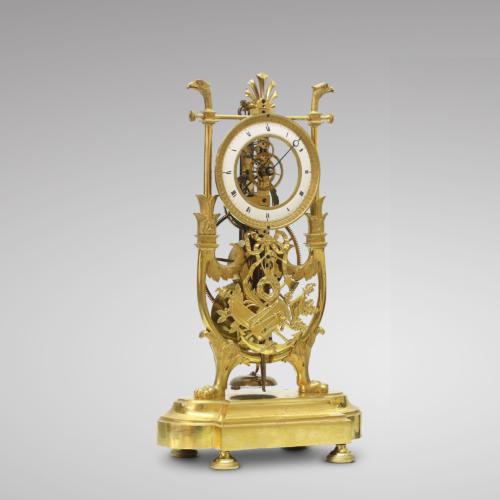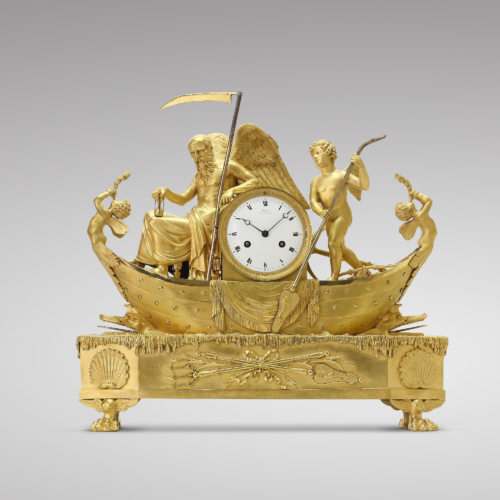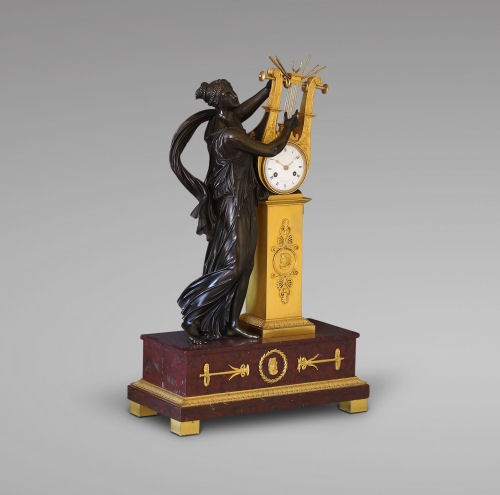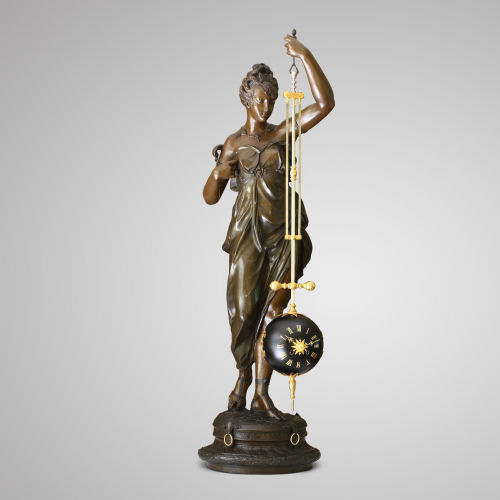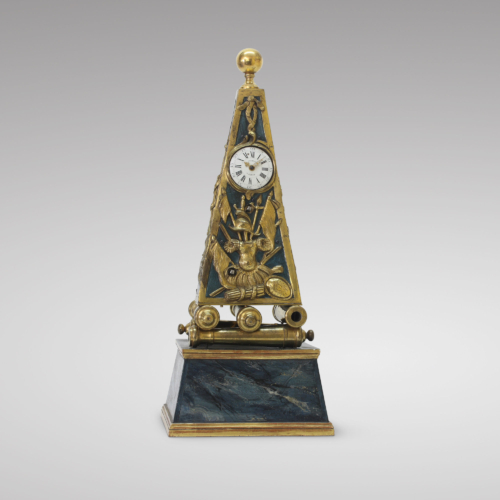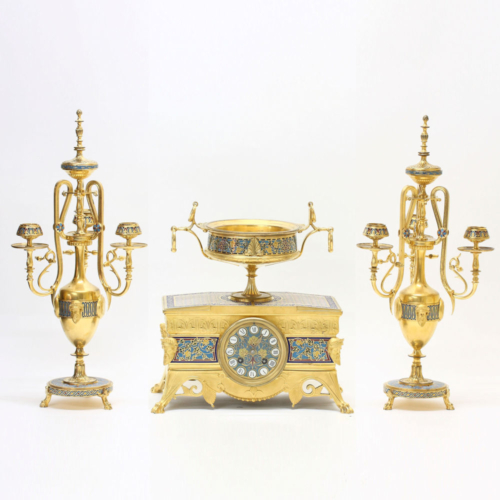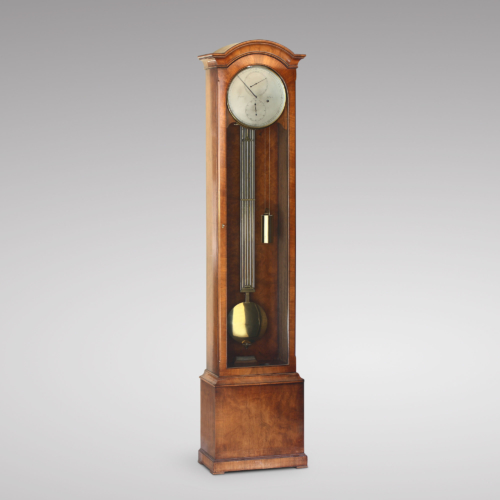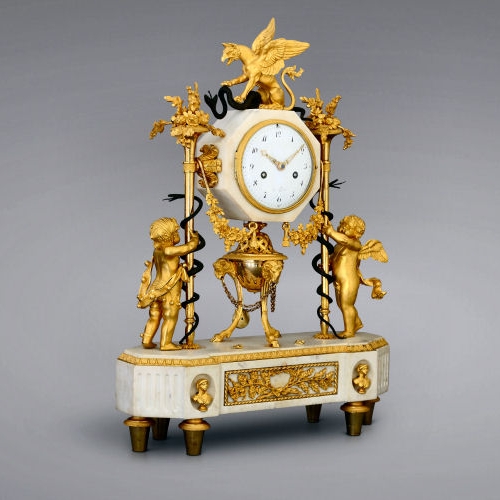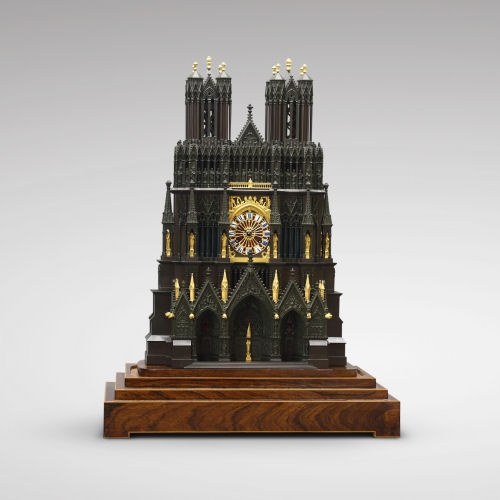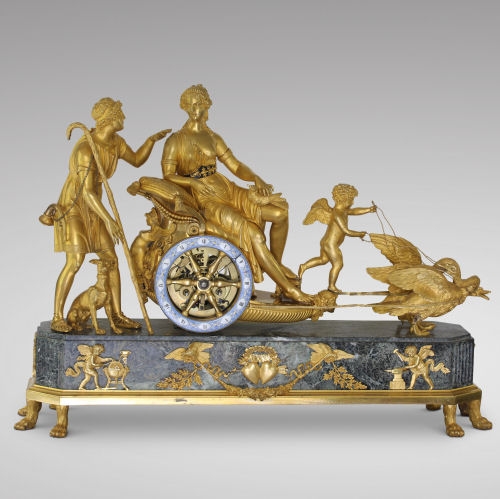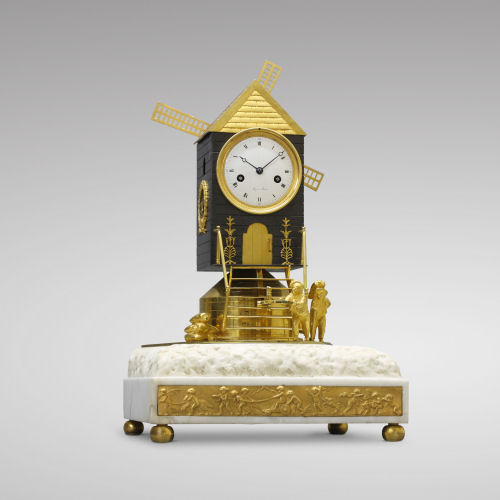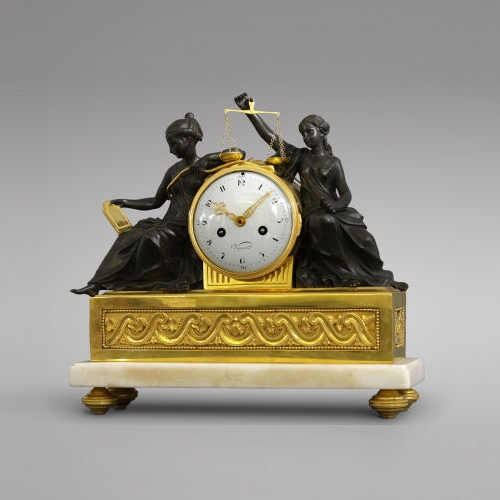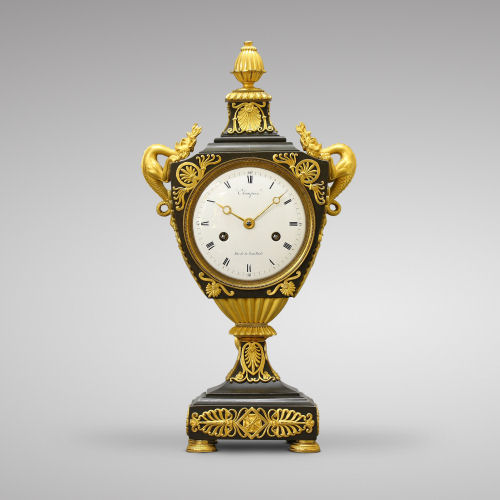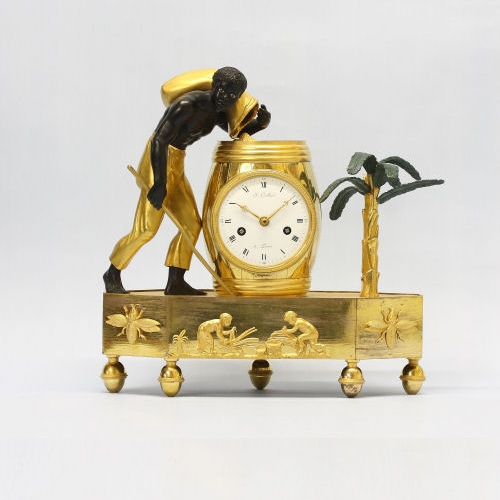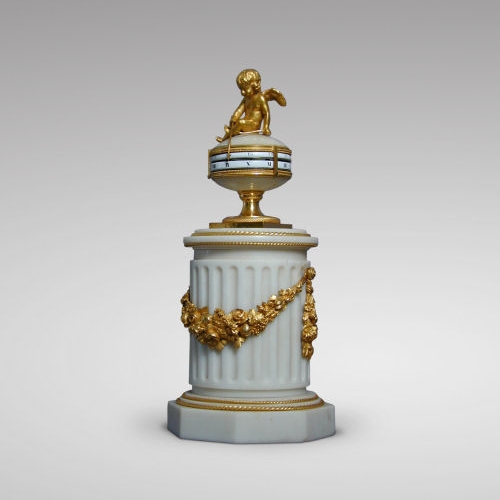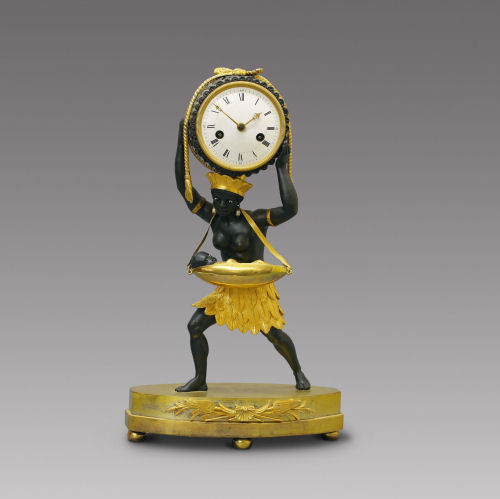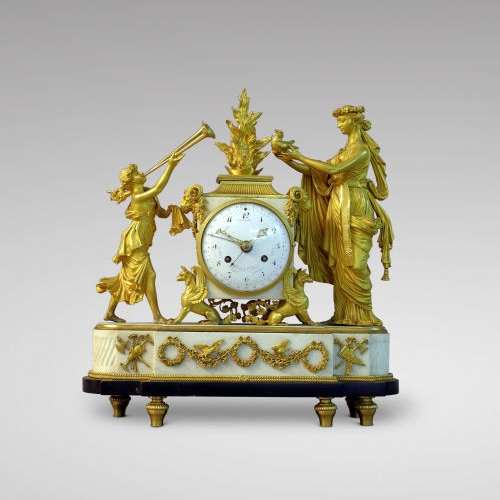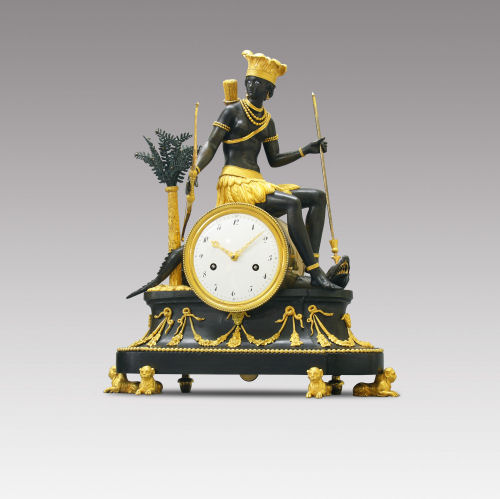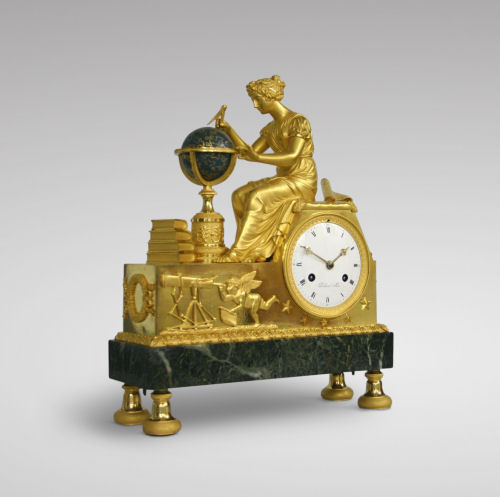French “Cathedral” Clock, second Quarter Of The 19th Century, circa 1830, the case in patinated bronze of two different colours and ormolu. Paris-type movement with recoil anchor escapement and silk-suspended pendulum, made by Honoré Pons and stamped Pons - Médaille d’Or 1827. Half-hourly countwheel strike on a steel gong placed in the base and chiming to the sound of a local church bell. Autonomy two weeks.
The clock dial, set in the façade in place of the rosette window, the enamelled metal dial painted to give the illusion of stained glass, the individual Roman-hour chapters in blue on white enamel, the blued steel hands in the form of partridge eyes (oeuil-de-perdrix); the case, the majority in patinated dark green or brown, the details accented in chased gilded bronze, backed with bright enamel-painted brass panels to give the illusion of stained glass; on a tulipwood veneer base enclosing the chime; original glass dome.
Dimensions
Height 48 cm (19"), with base 57 cm (22 1/2"), with base and dome 61 cm (24")
Width 32 cm (12 1/2"), with base 43 cm (17")
Depth 15 cm (6"), with base 24 cm (9 1/2")
Pierre-Honoré-César PONS (Paris, 1773 – 1851)
In 1789, Honoré Pons entered the workshop of Antide Janvier, who, in 1798, recommended him to the prestigious firm of Lepaute where he was hired as a clockmaker. On 9 January 1804, the young horologist presented his Observations sur l’échappement libre (Observations on a detached escapement) to the French Academy of Sciences, which earned him laudatory reviews and a commendation from the Academy. At thirty, Pons set up shop as a clockmaker on rue de la Huchette in Paris. In 1807, he was assigned by the State to revive the clockmaking industry of Saint-Nicolas-d'Aliermont, an important horology centre, near Dieppe, that comprised no fewer than 27 workshops. Known for his outstanding quality, Pons’ work had considerable influence on numerous renowned clockmakers. By the end of 1808 Pon’s success was already noted by academy scholars in their traditional report to Emperor Napoleon I on the progress of the sciences in France: ‘A few young individuals stand out, demonstrating notable talent and who […] one day will take the place of today’s great masters. The first of these, M. Pons, is not far from their ranks. His escapements are excellent; he has a passion for his art; he is an inventive thinker; his pinion and wheel cutting machine is an ingenious idea.’
Pons introduced machinery and production line methods for his Paris-style movements, which allowed for the considerable increase in production – up to 5000 movements per year – needed to supply the new industrial bourgeoisie’s strong demand for mantel clocks. In this manner he succeeded in developing the industry, while his participation at the Paris exhibitions earned him numerous awards for his perfectly crafted movements and remarkable precision timepieces; he received a Silver Medal in 1819 and 1823, and a Gold Medal in 1827, 1834, 1839 and 1844. After his death, the firm continued under the direction of Borromée Delépine in partnership with Cauchy, then, after the death of Delépine in October 1860, his son took over in a partnership with Barrois. The Delépine family received nothing less than a gold medal at the 1900 World’s Fair in Paris. The firm that was founded one hundred years earlier by Pons, had grown to 300 employees. As a true pioneer of the industrialisation of French clockmaking, Pons’ impact was considerable. All clockmakers of great renown were influenced by the quality of his work, in one-way or another.
Bibliography
Bibliography: Laurent de Commines, Eric Gizard, Un âge d'or des Arts décoratifs 1814-1848, Grand Palais, RMN 1991; Chavigny Richard, ‘Pierre-Honoré-César Pons, pionnier de l'horlogerie industrielle’, Bulletin de l'ANCAHA, no. 80, 1997; Pierre Kjellberg, Encyclopédie de la pendule française du Moyen Age au XXe siècle, Ed. L’amateur, 2005.
Price
€ 14000.-












